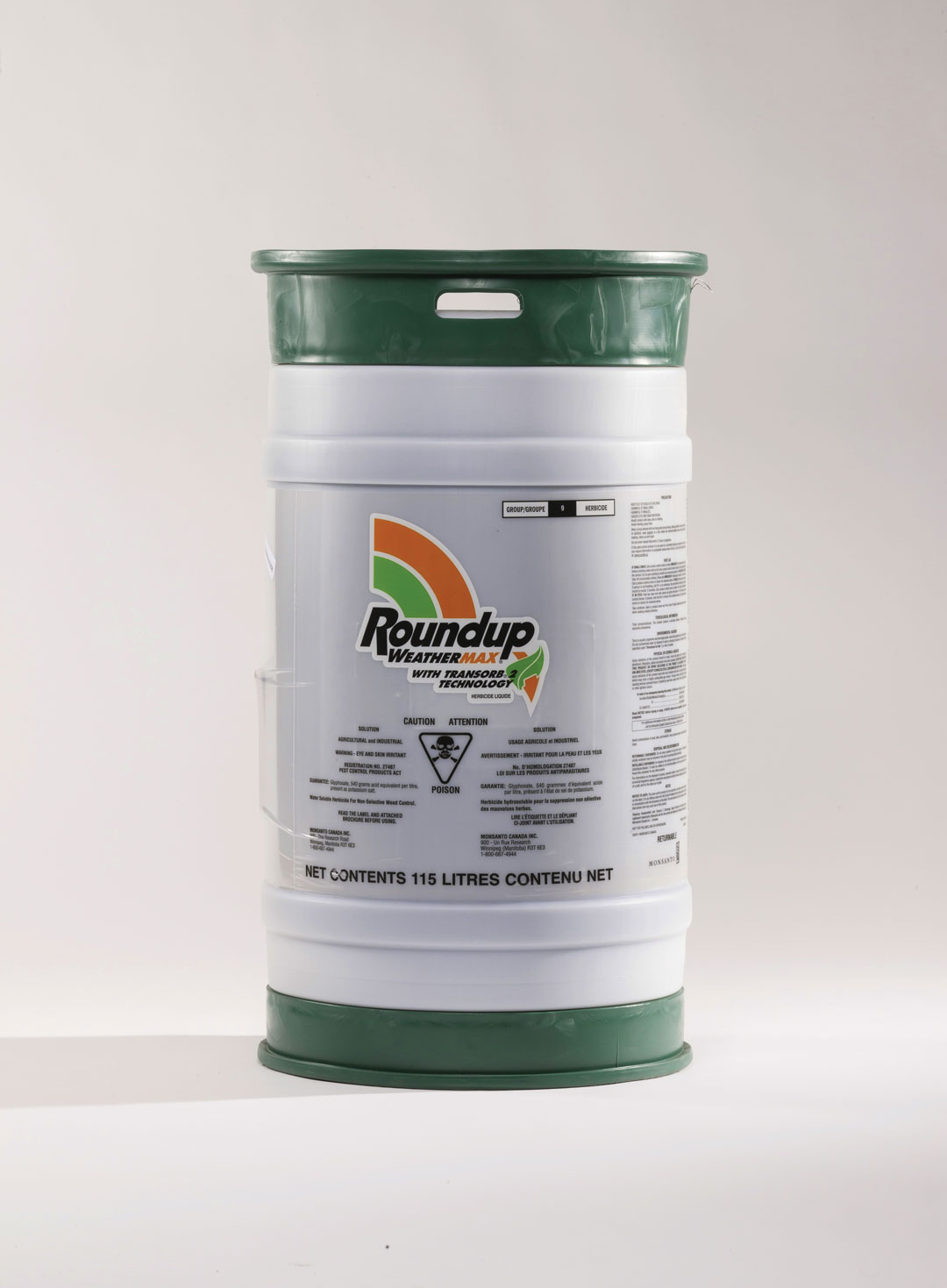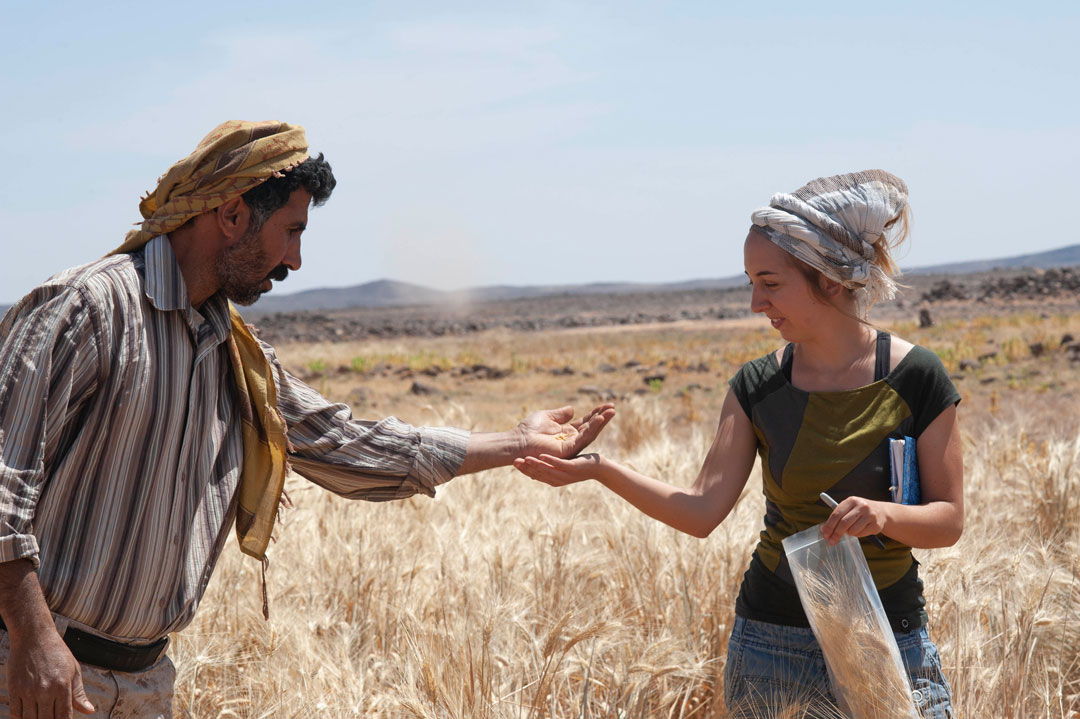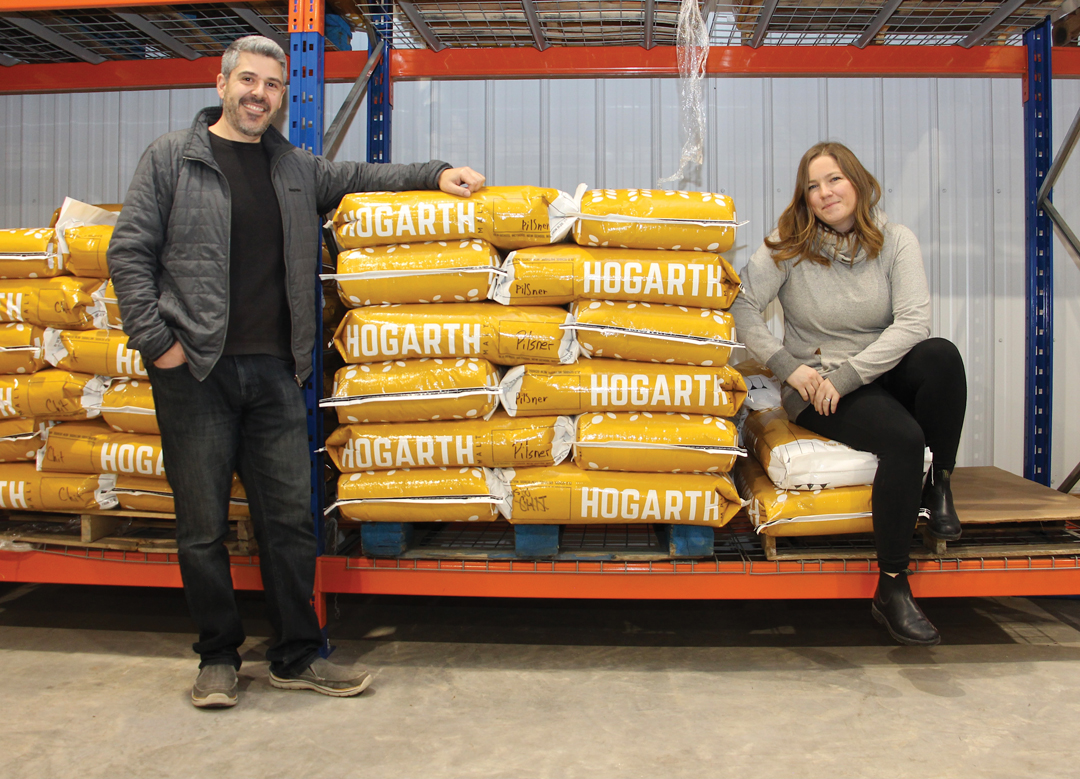ROUNDUP REBUFF
WIDELY USED HERBICIDE COMES UNDER FIRE
BY JEFF DAVIS
Out on his acreage in rural Saskatchewan, 33-year-old Todd Roberts happily went about his annual chores of clearing away weeds and turning over the garden for planting. “Fortunately, I’ve got the good stuff,” he said, referring proudly to a gallon jug of agricultural-strength glyphosate, better known by its ubiquitous trade name, Roundup.
Growing up on an expansive wheat farm, Roberts learned there is simply no equal to Roundup when it comes to tamping down stubborn weeds, whether in the kitchen garden or the seeded section. “I can hardly imagine farming without the stuff,” he said. “It’s just the best.”
And while glyphosate’s utility is not up for debate, its long-term health repercussions are. In March, the World Health Organization’s (WHO) International Agency for Research on Cancer (IARC) stunned the agricultural world by labelling glyphosate a “probable carcinogen.”
But with glyphosate being far and away the most used herbicide in global agriculture, the IARC’s reclassification of the crop chemical could have far-reaching effects on farming around the world. And while the highly relied-upon herbicide will not be blocked from use in Canada, there is growing agitation amongst cancer-prevention groups that its use be regulated for the protection of humans and the ecosystem.
Glyphosate was discovered to be an herbicide by Monsanto chemist John E. Franz in 1970, and has been a fixture of Canadian agricultural life ever since.
“Glyphosate is one of the most widely used and comprehensively evaluated herbicides on the planet,” said Trish Jordan, a spokeswoman for Monsanto Canada. “It’s used in many situations, agriculture being one of them. It’s used in conservation, parks and forestry. It’s a very common product and has a very well-documented history of safe use.”
Jordan also pointed to the WHO giving the same classifications to all kinds of everyday items in the same category, from coffee and cellphones to working the night shift and aloe vera cream.
“The ruling is quite concerning because it’s very misleading to the public,” she said.
Jordan also pointed to Health Canada’s stance on glyphosate as evidence that the herbicide remains safe to use.
Andre Gagnon, a media relations officer with Health Canada and the Public Health Agency of Canada, said the fear of glyphosate is overblown since Canadians are not exposed to the dangerous concentrations seen in lab tests. “The levels of human exposure, which determine the actual risk, were not taken into account,” he said.
Recently, Health Canada published a proposed re-evaluation of glyphosate’s use for public consultation, Gagnon said. The document proposed continued registration of products containing glyphosate for sale and use in Canada with implementation of further risk-reduction measures.
Health Canada’s Pest Management Regulatory Agency, under the authority of the Pest Control Products Act and Regulations, is proposing continued registration of products containing glyphosate for sale and use in Canada, according to Gagnon.
Canada’s stance, Gagnon said, is in line with other countries. “Currently, no pesticide regulatory authority in the world considers glyphosate to be a carcinogenic risk to humans,” he said.
According to a March 2015 report from the IARC, the agricultural use of glyphosate has increased sharply since the development of crops that have been genetically modified to make them resistant to the herbicide. After decades of prolific use, the IARC said, glyphosate has been detected in our water and food, and in the air near areas where spraying takes place.
Glyphosate has been considered a “possible” carcinogen since 1985, after laboratory mice exposed to it developed tumours. Additional studies conducted in 2001 in the United States, Canada and Sweden again pointed to its carcinogenic potential. “For the herbicide glyphosate, there was limited evidence of carcinogenicity in humans for non-Hodgkin lymphoma,” the IARC report said. “Glyphosate also caused DNA and chromosomal damage in human cells.”
The recent reclassification of glyphosate from a “possible” to a “probable” carcinogen has renewed calls for Canada’s most beloved herbicide to be controlled more stringently.
Meg Sears is the chair of Prevent Cancer Now, which aims to build a Canada-wide movement to eliminate the preventable causes of cancer through awareness, education and advocacy. Sears, who holds a doctorate in biochemistry, said she supports the IARC’s decision to brand glyphosate a probable carcinogen.
While it’s certainly effective at suppressing annual and broadleaf weeds, Sears claims glyphosate has a number of cascading negative effects on both human health and the environment. “In areas where there is very heavy use of Roundup-ready crops and glyphosate use, there are epidemics of birth defects and very-quick-onset kidney disease that ends up killing people,” she said. “It’s lethal.”
Glyphosate in soils and water has the effect of destabilizing toxic heavy metals such as arsenic, mercury, cadmium and lead, Sears said. Once these metals are floating freely, it is much easier for them to make their way into animal and plant bodies.
Sears added that glyphosate can also impoverish soils over time by killing essential bacteria. “It’s an antibiotic, so it may impact bacteria important for breakdown of organic material, as well as for fixation of nitrogen to fertilize the soil,” she said. “In humans, glyphosate may also affect the gut flora and essential nutrients it produces, playing into autoimmunity, inflammation and eventually diseases such as cancer.”
Despite the IARC’s renewed warnings about glyphosate, the Canadian government recently decided, after a six-year review process, that it would continue allowing the widespread use of the herbicide on Canadian soils.
Jordan said the Canadian government’s decision is the correct one and she challenged the scientific soundness, as well as the underlying motive, of the IARC’s ruling: “Obviously, we’re in complete disagreement with the IARC ruling, and it’s completely inconsistent with numerous multi-year, comprehensive assessments that have been conducted by hundreds of scientists around the world.” She also pointed out that the WHO itself has disagreed with its cancer research wing in the past, adding the IARC “cherry picked” information from various older studies without bringing any new research to the table.
In any case, she said, glyphosate is here to stay thanks to the recent decision by Health Canada. “This is a vital product to agricultural productivity, and if you talk to farmers, they agree,” she said.
Irmi Critcher is one of those farmers. She and her husband Barry farm 4,000 acres of grains and oilseeds in Taylor, B.C—part of the Peace Region. Critcher is the vice-president of the national farm advocacy group, the Grain Growers of Canada, and chairs its sustainability and sound science committee. Glyphosate is an essential tool for farmers across the country, she said, and the IARC ruling hasn’t changed that.
“It’s extremely important. We’ve all adopted it on our farms. We use it for all the registered uses, whether it’s pre-seeding burn off, whether it’s in-crop or whether it’s pre-harvest,” Critcher said. “It’s always been very effective on a broad spectrum of weeds and it still is and we’ve never had any problems with it as such.”
Critcher pointed to scientific studies from several organizations, such as the U.S Environmental Protection Agency and the German Institute for Risk Management, which both deemed glyphosate safe.
“Farmers care about their land, the food they’re growing and their families,” said Critcher. “We’d never do anything to jeopardize our way of life.”







Comments